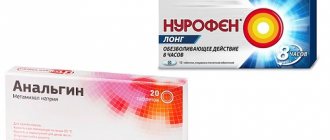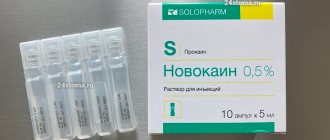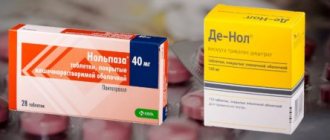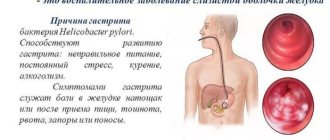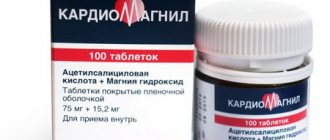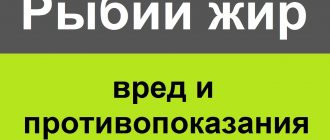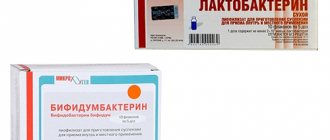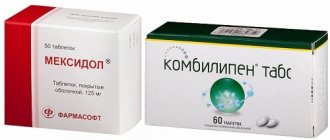Sometimes one medicine, designed to relieve severe pain or lower a high temperature, is not able to normalize well-being. Then special combinations of painkillers come to the rescue. No-spa and Analgin, having a synergistic effect, have proven their tandem as the most effective medicinal complex, relieving fever and pain in minutes.
No-spa and Analgin, having a synergistic effect, have proven their tandem as the most effective medicinal complex, relieving fever and pain in minutes.
How do drugs act on the body together and separately?
No-spa relieves spastic pain that occurs in smooth muscle tissue during diseases of the biliary and urinary tracts, and works well for headaches, periodic female pain, and spastic phenomena in the digestive organs.
Analgin helps with renal colic, toothache, post-traumatic pain, burns, myalgic and neuralgic pain, spasms of cerebral vessels and spastic phenomena caused by pancreatitis, etc.
Fever provoked by ARVI or intestinal infections is suppressed by the antipyretic activity of the analgesic.
The simultaneous use of No-shpa and Analgin leads to a “breakdown” of the mechanism of the onset of pain and contributes to the rapid relief of the patient’s well-being. This combination of drugs fights high fever, against which other antipyretics are powerless.
Lytic mixture is one of the most popular antipyretic drugs for children and adults today. To bring down a high temperature, you should use a strong remedy, such a remedy is a lytic mixture.The lytic mixture is also relevant in cases where conventional medications, such as syrups or suppositories, do not help. The lytic mixture is especially indicated for fever in children, the elderly and groups of people with chronic cardiovascular diseases, and prolonged hyperthermia can cause their exacerbation. This remedy is also prescribed in cases where there are symptoms of intoxication of the body, with severe vomiting and diarrhea, or with a hangover.
The lytic mixture comes in both tablet and injection form.
Lytic mixture from temperature in tablets
The main advantage of the lytic mixture in tablets is that in the event of an allergic reaction, the patient’s stomach can be washed out. However, the results from taking pills appear later than from injections. The medicine begins to act only after half an hour. The required dose of the drug should be crushed and diluted with water, and then taken. At the same time, analgin tablets cause irritation of the gastric mucosa and can cause discomfort.
Lytic mixture in the form of injections
A faster and more effective remedy is intramuscular injections. This is an excellent way to combat fever, because the effect of the injections becomes noticeable within a quarter of an hour. The injection should be given no more than every 6 hours, and ideally once a day.
Emergency doctors usually intramuscularly inject a lytic mixture of certain parts of diphenhydramine (papaverine) and analgin. This composition brings relief within 15-20 minutes. This happens because analgin in combination with diphenhydramine or papaverine has a very strong antipyretic effect, much greater than the properties of paracetamol or aspirin.
DOSAGE
Dosage for children
Up to 14 years of age is determined by the pediatrician based on the weight and age of the baby. Typically, analgin is taken at 10 mg per 1 kg of baby’s weight, papaverine at 0.1 ml, and diphenhydramine at 0.41 ml for each year of the child’s life.
For adults
2 ml of analgin, 2 ml of papaverine, 1 ml of diphenhydramine are taken into one syringe. However, today, when diphenhydramine is sold exclusively by prescription, it can be replaced with suprastin.
Dosage of lytic mixture in tablets
In certain cases, a lytic mixture in tablets may be more appropriate than regular injections. A lytic mixture for fever for children is widely used, the dosage in tablets of which includes the following portions of drugs: ¼ tablets each of analgin, suprastin and no-shpa. The tablets can be crushed and diluted with water, and then given to the child to drink.
The lytic mixture for fever in tablets for adults is also suitable. The proportions of this method of drug administration are simple: 1 tablet of analgin, 1 tablet of suprastin or diphenhydramine and 1 tablet of no-shpa or papaverine. The tablets should be taken with plenty of water.
The effectiveness of the mixture in tablets is much lower. That is, of course, there will be an improvement, but it will not happen immediately.
Lytic mixtures in tablets for the older generation have a completely different composition: Baralgin. No-shpa or papaverine. Diazolin or suprastin. All drugs are used in equal quantities - one tablet.
Preparation
The prepared ampoules are heated to the patient’s temperature (you can simply hold them in your hands) and wipe with alcohol. Having opened the ampoules, the drugs are drawn into the syringe in the following sequence: analgin, diphenhydramine (suprastin), papaverine. The buttock is conventionally divided into 4 equal parts. The upper outer quadrant is treated with alcohol, the muscles are pinched with your fingers and, holding the syringe at a right angle, the lytic mixture is slowly and very carefully injected. The injection site is again treated with alcohol and for some time, pressing, the tampon is held at the injection site.
Experts do not recommend lowering the temperature below 38.5°C, except in some cases.
Before using such strong remedies as a lytic mixture, you should definitely try to bring down the temperature using gentler methods that will not harm and activate the body to fight the disease. First of all, this includes drinking plenty of fluids. Dehydration is an eternal companion of high temperature. To replenish your electrolyte balance, you should drink more water than usual.
When to use a combination of drugs
Indications for joint use of drugs:
- pain syndrome of various etiologies: muscle and stomach pain, headache attacks, dysmenorrhea, pain due to diseases of the excretory and reproductive system, acute intestinal infections;
- inflammatory processes that accompany high temperature;
- fainting or convulsions due to hyperthermia;
- postoperative period.
Analgin helps with renal colic, toothache, post-traumatic pain, burns, myalgic and neuralgic pain.
Joint effect
The simultaneous use of drugs enhances their basic pharmacological properties. Troikatka has a quick effect in relieving symptoms of fever, pain in muscles, joints and peripheral tissues. The combined use of the drugs is recommended to reduce the pyretic temperature, the intensity of the inflammatory process and relieve pain.
Diphenhydramine reduces the possibility of allergies to the administration of potent drugs.
special instructions
The combination of drugs does not affect the ability to perform potentially hazardous work and functions that require increased attention.
Pregnancy and lactation
At the same time, No-shpu and Analgin cannot be used as a therapeutic measure in the first and final trimester of pregnancy. After the third month of bearing a child, use is possible only as prescribed by a doctor who is confident that the benefits of such therapy for the mother are more important than the risk of negative effects of medications on the fetus. When breastfeeding, the combination of drugs is prohibited.
Childhood
No-shpu and Analgin for children under 6 years of age are used only in emergency cases. Children who have reached this age are allowed to take these medications for no more than 1-2 days. If symptoms persist, consult a doctor.
Elderly age
The No-spa + Analgin combination is taken by patients over 60 years of age in a reduced dosage.
Dosage of the drug
Parents often ask questions: “Is it possible to give no-shpa to children? How much to give no-shpa to a child? How to give? According to the instructions for the drug, no-spa is used in children over 6 years of age. From 6 to 12 years it is recommended to take one tablet (40 mg) 1-2 times a day. In children over 12 years of age, it is possible to use one tablet (40 mg) 1-4 times a day.
As mentioned earlier, no-shpa is also used in children under 6 years of age (from 1 year). At the same time, doctors monitor the baby’s condition.
The optimal dosage regimen is determined by the attending physician. It is necessary to strictly observe the compliance of the dosage form of no-shpa with the indications for its use and dosage regimen.
It is necessary to strictly observe the indications for use and dosage regimen.
Contraindications to the use of noshpa and analgin
Taking these medications together is prohibited for people who have been diagnosed with:
- heart failure;
- blood diseases;
- liver and kidney diseases;
- lactose deficiency;
- hereditary galactose intolerance;
- hypersensitivity to the components of the products.
Dyspeptic disorders may appear due to taking No-shpa.
Action But shpy
The active substance of the drug is drotaverine, due to which the drug has antispasmodic, hypotensive and vasodilating effects. No-Spa promotes the expansion of vascular walls and increases the cardiac output.
The medicine does not affect the ANS and does not penetrate the central nervous system. In combination with other pharmacological agents, it helps lower blood pressure and enhances the analgesic and antispasmodic effects.
Overdose
Exceeding the daily dose of Analgin is fraught with:
- digestive system disorders with stomach pain;
- abnormally low body temperature and blood pressure;
- heartbeat exceeding normal;
- spasms;
- shortness of breath and respiratory dysfunction;
- tinnitus;
- excessive sleepiness;
- a sharp decrease in the number of leukocytes;
- thinking and consciousness disorder;
- shedding of blood into the body cavity;
- damage to the kidneys and liver.
A dose of analgin of 5-20 g can cause death.
Symptoms of an overdose of No-shpa are:
- arrhythmia;
- atrioventricular block;
- dyspeptic disorders;
- asphyxia.
Uncontrolled use of the drug is deadly.
Contraindications
Troychatka is a potent drug, therefore it has a number of contraindications. The use of the lytic solution is not allowed in the presence of chronic gastrointestinal diseases, pregnancy and during breastfeeding, blood diseases, kidney, heart or liver failure.
Analgin helps relieve pain symptoms.
Absolute contraindications also include:
- allergy to NSAIDs and components;
- age up to 3 years;
- bronchial asthma;
- glaucoma;
- stomach and duodenal ulcers;
- sharp pain in the abdominal cavity.
Doctors' opinion
Ekaterina, pediatrician, Moscow
Troychatka has a powerful effect. To avoid serious complications, the injection of the lytic mixture should only be performed by a medical professional.
Vladislav, therapist, Volgodonsk
The lytic mixture consists of drugs with good compatibility. Thanks to the correct dosage, medications enhance each other's properties. If you are hypersensitive to one or more components, you can use products with a similar effect. You cannot self-medicate, otherwise triad may cause serious complications.
